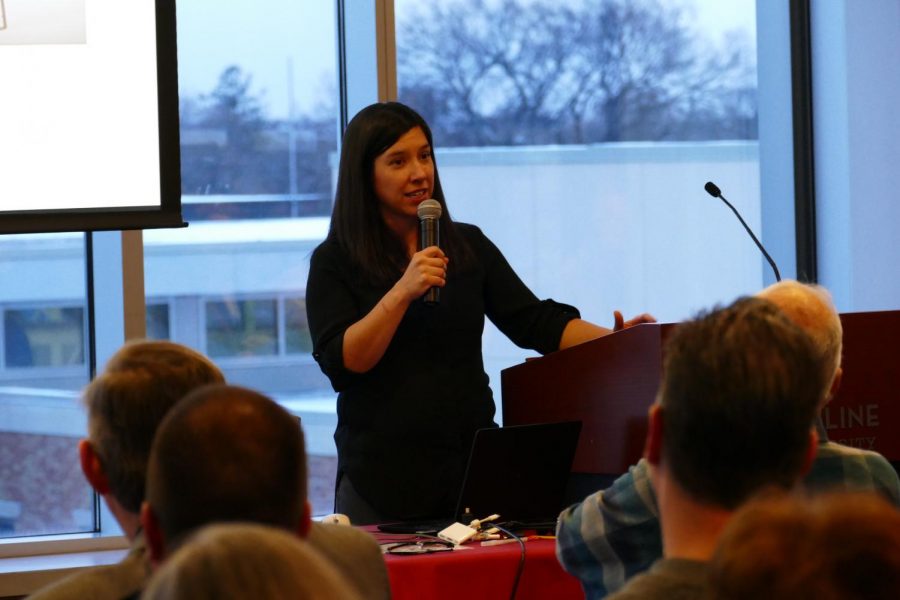“A problem that’s not going away”
In the wake of the recent California shooting, Hamline professor unveils the first data on mass shooters.
Hamline Professor Jillian Peterson, Ph.D. presents her findings.
November 16, 2018
After nine months of research, Criminal Justice Professor Jillian Peterson has created a database of some of the first statistical information about mass shooters in U.S. history.
Although that data is more than has been collected about mass shootings before, the results do not provide a profile of mass shooters.
“We were looking for typologies or profiles, and there wasn’t one,” Peterson said. “There were no clusters in the data. But that discovery in itself is super important.”
Speaking at a public presentation called “Mass Shootings: Pathways to Prevention” on Nov. 9, Peterson and her research partner James Densley, a sociologist and professor at Metropolitan State University, shared the preliminary results of their research and pointed the way toward new strategies for prevention.
Their findings showed a significant spread between age groups, race, possible motivations and weapons used. Unexpectedly, they said, 70 percent of shootings are actually carried out with a handgun rather than an assault rifle.
Similarly, mental or social factors such as substance abuse, trauma, mental illness or a history of attempted suicide were varied, with mental illness being a factor in only about 50 percent of cases. That is only slightly higher than the overall percentage of adults who will experience mental illness in their lifetime, Peterson pointed out.
Instead, the main indicators seem to be repeated suicide attempts and multiple psycho-social issues.
“We did find that people had a lot of risk factors for violence,” Peterson said. “It wasn’t just bullying or just mental illness or just trauma… It was all those things building on top of each other.”
She stressed the connection between suicide and mass shootings, suggesting that their data points to a redefinition of mass shootings as murder-suicides. She called for policy changes and funding to provide treatment for individuals at risk of suicide.
In addition to these ties to suicide, the data also supported a connection between mass shootings and social media. Densley noted how social media’s role in past shootings has been as a platform that makes shootings an act of performance between the shooter and an online audience.
For instance, during the recent California shooting which ended with 12 dead, Densley said the shooter posted on social media during the attack.
To prevent this kind of performance and suicidal attempt to garner attention, Densley said there needs to be a change in how the public responds to mass shootings.
“If this is a performance, let’s stop giving them the oxygen they need,” Densley said. “Let’s stop mentioning their names in headlines. Instead, let’s talk about the victims and the heroes involved.”
Although the number of shootings has not risen in recent years, the individual body count continues to increase. With seven separate shootings to date, this year ties with 2012 and 1999 for the number of shootings.
2017 is currently the worst year on record with eight mass shootings, as well as the highest number of casualities at 45 from the Las Vegas shooting.
“Clearly this is a problem that’s not going to go away,” Peterson said.
Peterson and Densley’s research will continue for another two years, funded by a grant from the U.S. Department of Justice. They will continue to develop their individual shooter database, which is anticipated to be publicly accessible by 2020.
Starting next year, they will also begin compiling a second database examining community-based risk factors that may contribute to mass shootings.



